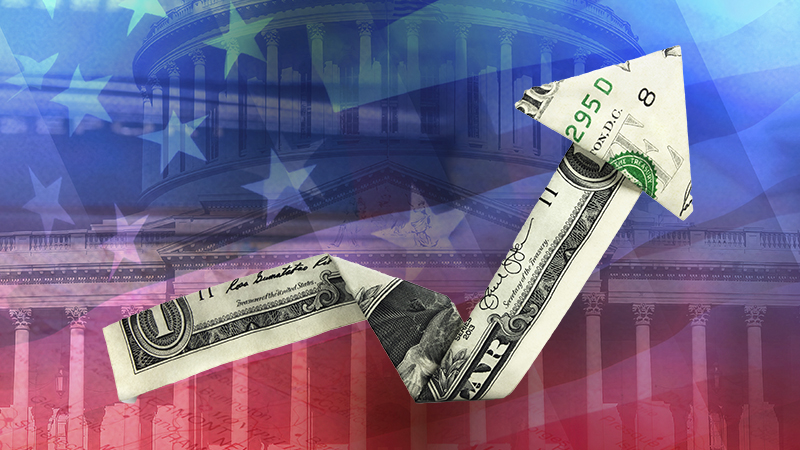The US Consumer Price Index (CPI) grew by 2.6% in the year to the end of October, heading in the opposite direction from the Federal Reserve’s 2% inflation goal but in line with market expectations.
In September, inflation hit 2.4% year on year, following the Federal Reserve’s 50 basis point interest rate cut on 19 September. The Fed cut for a second time this year on 7 November, to 4.5 to 4.75%, as Fed chair Jerome Powell worked to balance inflation with the lowering of interest rates.
Shelter continued to be a raised area for CPI, rising 0.4% in the month of October. Core inflation remained steady at 3.3% for the fifth month in a row.
See also: UK wage growth ‘ticks stubbornly along’ at 4.8%
Nathaniel Casey, investment strategist at wealth management firm Evelyn Partners, said the tick up to 2.6% “shouldn’t be of too much concern” mostly due to a calm print last October.
“Used car prices added some pressure today, with prices in this segment rising by 2.7% for the month of October. However, the basket for apparel fell by 1.5% over the month, in aggregate this was enough to bring the overall category of core goods to a neutral 0% change for the month and remains in deflationary territory on an annual basis,” Casey said.
“Energy continued to be a source of good news this month with energy commodity prices down 1% for the month thanks to weaker crude prices. However, this was offset by energy services which produced a strong print for the month. Food inflation decelerated slightly after a warmer print for the category in September with the annual inflation rate now sitting back at 2.1%.”
The Fed will hold its last meeting of the year on 18 December, the last opportunity of 2024 to cut interest rates. Currently, markets are pricing in another 25 basis point cut at this meeting.
See also: Eurozone inflation ticks up to 2%
Hetal Mehta, head of economic research at St. James’s Place, said: “Though the US inflation numbers are in line with the consensus expectations, it seems as though markets were anticipating something stronger – as a higher probability of a December rate cut is being priced in.
“Looking at more dynamic measures of underlying inflation, such as the 3-month annualised rate of core CPI, we are seeing a strengthening of inflation pressures and think it less likely the Fed can continue to cut at the recent aggressive pace. With inflationary policies such as tariffs and a persistently enlarged fiscal deficit, the risks are skewed to the Fed curtailing its cutting cycle early.”
The October reading follows the election of Donald Trump as president on 6 November, which analysts believe could lead to inflation increases based on Trump’s policy plans.
Lindsay James, investment strategist at Quilter Investors, said: “While US inflation coming in line with expectations means no nasty surprises for markets, the real quandary for the Federal Reserve is what do they do with rates from this point. President-Elect Trump is busy putting his team together ahead of January’s inauguration and it is clear where the policies lie. Taxes will be cut at the same time as fiscal expansion, resulting in ever greater deficits and the potential for a reinflationary spike. US inflation is proving rather stubborn to get at or below target, unlike other developed economies in Europe, so any rate cuts again this year appear like they might just have to be reversed again should inflation spike.
“Over the last 12 months in the US the cost of all goods and services have risen. Across the board tariffs, and the retaliatory action other states will take, will simply continue to push those costs upwards. This remains a US economy that is proving very robust and with an impending sugar high from Donald Trump on the horizon, it will continue to hit new highs.
“However, having warned multiple times that rates will be higher for longer, this appears it will not definitely be the case. Despite it seeming under control, inflation remains one of the most important data points around and will continue to be key driver of the Fed’s decision making. How this goes against Trump’s economic policies will be interesting to watch and could spark some fresh volatility in markets over the medium-term.”









